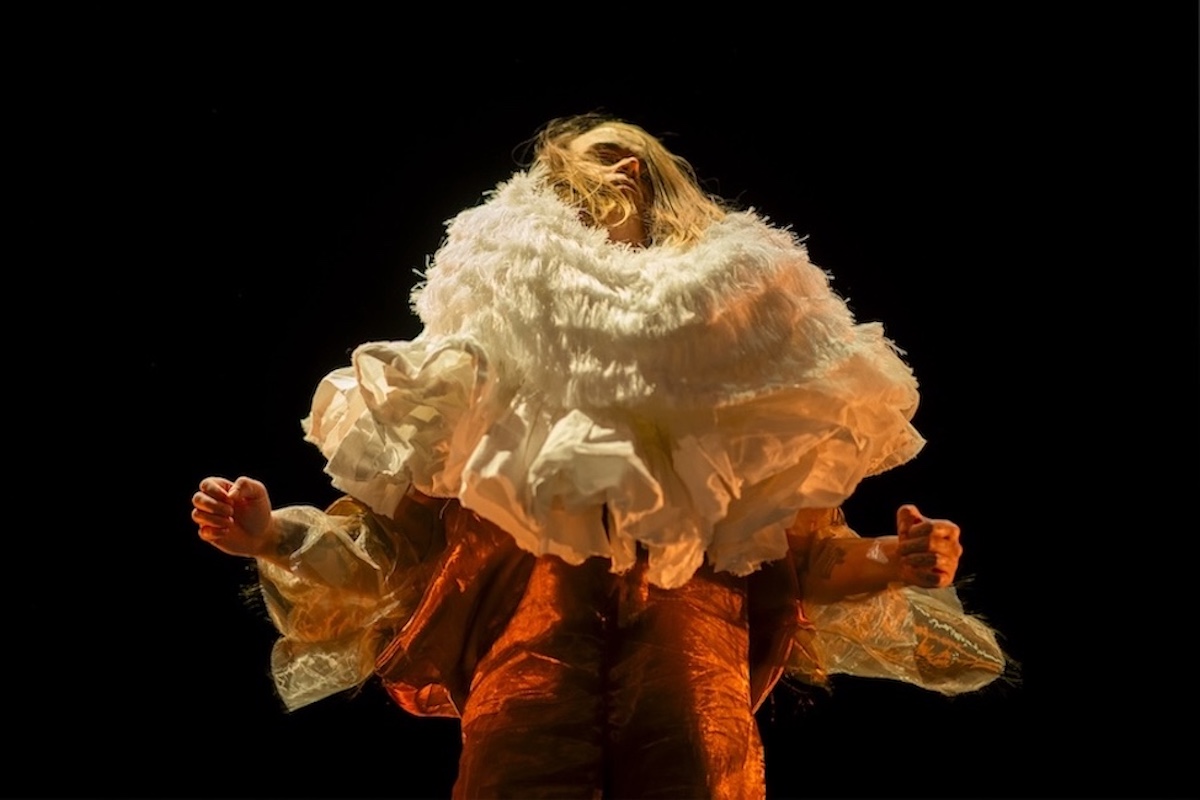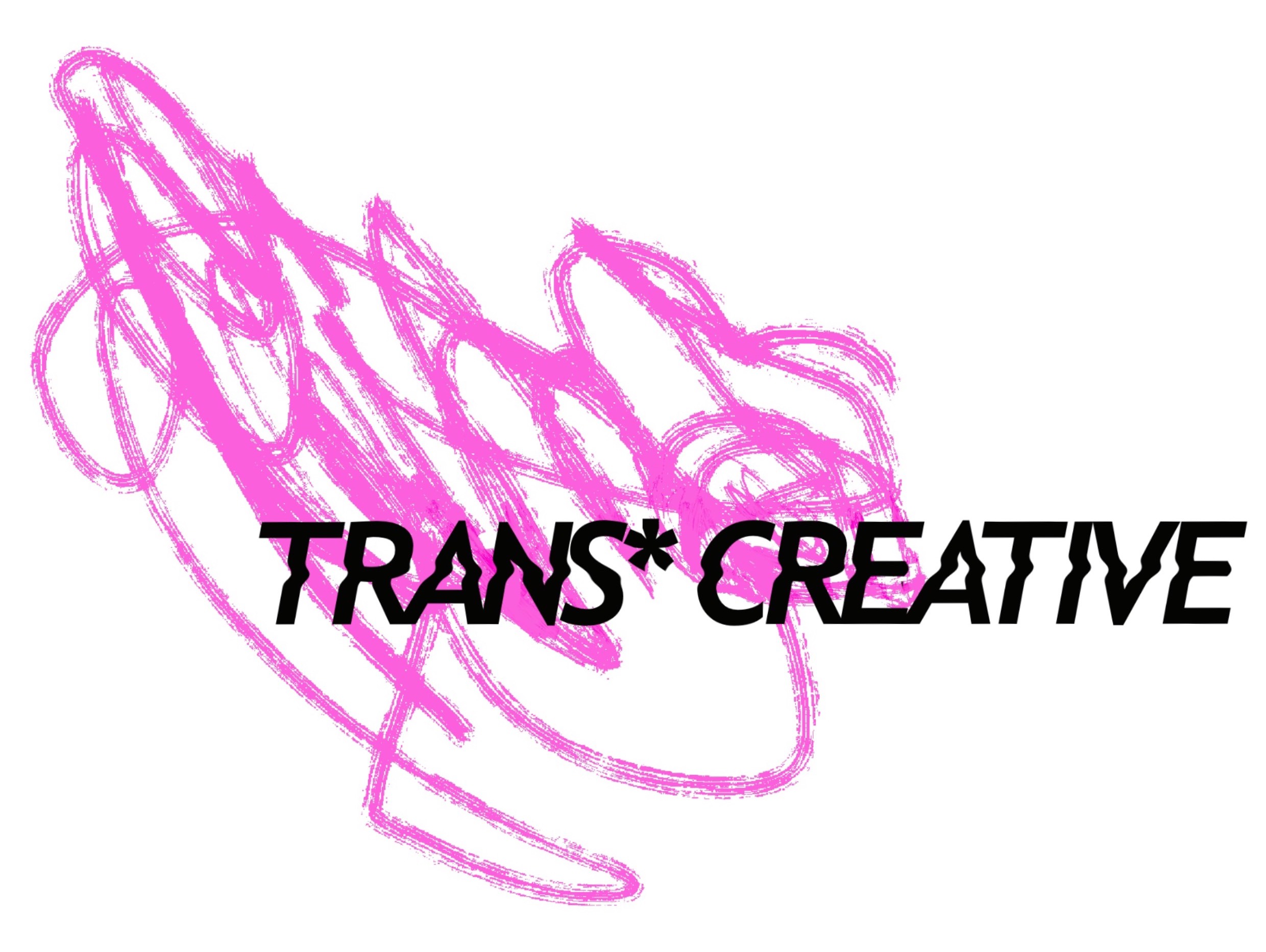
Ruffling the Feathers of Not-Knowing
by: Lotta Kähkönen
Image: Tani Simberg
I am intensely watching a series of film excerpts displaying the “lekking” (opens in a new tab) of ruffs, a species of wading bird living in marshes. The footage enables me to observe ruffs engaged in continuous movements: fluffing their extravagant ruff collars, perching their bodies, making brief swoops into the air, and repeating the movements endlessly. The synchronized motion of the birds resembles an algorithm adopted by the birds. Or perhaps it’s coded in their genetic makeup. But I realize this is just scratching the surface. I am attempting to discern patterns that might provide a deeper understanding of their collective dance.
The above-described film footage is an element of Camille Auer’s performance, titled “Ruff Knowledge,” featuring spoken discourse, movements, sounds, and the film excerpts that culminate the piece. The structure of the performance allows the audience time to grasp the significance of embracing not-knowing.
Auer's curiosity about ruffs has been sparked by their intraspecific diversity, surpassing conventional scientific observations of sex differences. The male ruffs exhibit three genetic variants, with one resembling and behaving like a female. Our knowledge of ruffs remains limited, and despite their behaviors defying human notions of binary sex and heterosexuality, they are still often viewed through rigid lenses. The performance adopts a Queer ecological (opens in a new tab)perspective, challenging not only the binary concepts of biological sex and sexuality but also highlighting anthropomorphic tendencies that impose human-centric taxonomies onto non-human animals.
In the spoken component, Auer tells about her relationship with birds and the process of creating the performance. She shares a lot of knowledge and ponderings about ruff's ways of being in the world, posing a question: Can we know what it is like to be a bird? An easy answer is no, but much more interesting is our persistent aim to comprehend.
This question echoes the renowned essay ”What is it like to be a bat?” (opens in a new tab) by the American philosopher Thomas Nagel.Footnote1 In his essay, Nagel delved into the subjective nature of conscious experience and the limitations of objectivity. He posits that conscious experience is not exclusive to humans but is also present in animals. Nagel’s argument revolves around the notion that even if we can imagine certain aspects of a bat’s existence and perception of the world, our understanding merely provides insight into what it’s like for me to be a bat, not what it's like for the bat to be a bat.
As a scholar, I am inclined to meticulously dissect and analyze everything, often to the point of exhaustion. However, when faced with art, particularly performance art, I remind myself of the importance of simply observing and listening to what is happening, rather than attempting to decode every reference. In Auer’s speech, I find myself submerged in a realm of posthumanist thinking (opens in a new tab) and human-generated knowledge about ruffs, birds, and our interconnectedness with nature. As I recognize, reconsider, and reevaluate these ideas, my mind becomes a whirlwind of thoughts, buzzing like a flock of a thousand wings. Auer’s stories of her childhood obsession with birds resonate deeply, evoking memories of my own attempts to experience the world from a bird's perspective — like climbing high into a tree to look at the landscape below. I also recall vivid dreams where I experienced sensations of having wings and flying. However, this journey guided by Auer serves as a necessary prelude to what awaits ahead.
The spoken part gently leads the audience towards a more heightened awareness, prompting us to reconsider our ways of relating, observing, and interpreting the birds as coexisting creatures. It urges me to let go of my ingrained habits and embrace the state of not-knowing, focusing on how these birds and other phenomena are beyond the reach of human concepts and assumptions that accompany them.
The audience is compelled to engage with birds by listening more carefully to the sounds they make, such as the flapping of their wings and their ways of calling each other. Looking at the film footage induces a meditative experience in me. I recall nature documentaries with voiceovers that guide our interpretations of animal behavior. However, as part of the performance, the film excerpts of ruffs are accompanied by sounds and bird voices that steer us away from interpreting birds through human knowledge. I find myself contemplating the limitations of my imagination. Simultaneously, I feel a sense of dread knowing that ruffs are critically endangered. There is so much to unlearn and relearn. What happens if these birds become extinct, and we miss the opportunity to assemble new insights? I haven't yet learned to perceive ruff knowledge! Do I need to? Perhaps it is better to focus on experiencing and changing the human way of observing and thinking.
Amidst these swirling feelings, thoughts, and emotions, I pause and observe them as they come and go. Ultimately, I am reminded of Francisco Varela's notion of a creative outlook—a journey of experience and learning rather than a mere intellectual puzzle to be solved.Footnote2 Indeed, art plays a crucial role in our transformation.
Ruff Knowledge was performed at the Spring Roll Festival (opens in a new tab)on April 20, 2024. The festival is an interdisciplinary arts event organized by Ehkä-production (opens in a new tab). The festival takes place in the contemporary art space Kutomo, situated in a historic weaving mill building near Turku Castle in Turku.
References
Nagel, Thomas 1974. "What Is It Like to Be a Bat?" The Philosophical Review, 83(4): 435-450.
Varela, Francisco J. 1999. The Ethical Know-How: Action, Wisdom, and Cognition. Stanford, CA: Stanford University Press.
